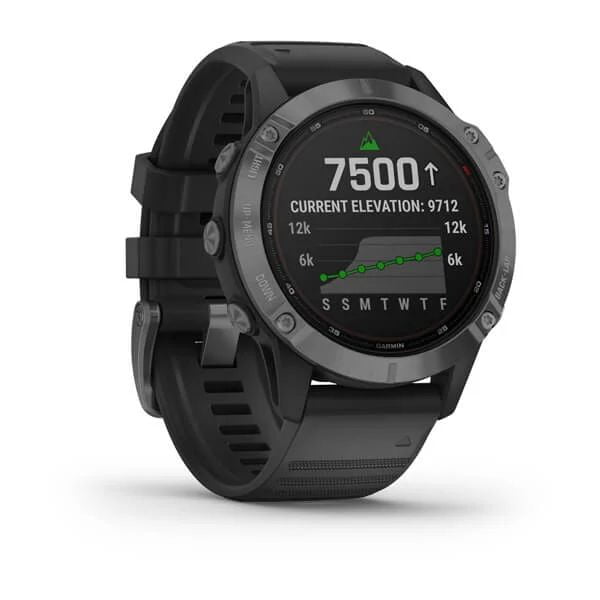In this review, we will discover the specs, features of Garmin Fénix 6 Pro Solar Edition, but also try to understand if the addition of the solar recharge on a connected watch justifies an additional cost of up to 249 dollars?
Which is better: Fénix 6 or Fénix 6 Pro Solar Edition?
Garmin’s engineers kept a good part of the Fénix 6 in the development of its Solar version. In fact, the two products are similar in many ways and the most of the work consisted of integrating the solar recharge capability into the new watch in the catalog.
While AMOLED reigns supreme on most high-end connected watches, Garmin favors a less consensual technology, the LCD. This is a choice that is perfectly accepted by the manufacturer, which is aimed here at athletes rather than aesthetes.
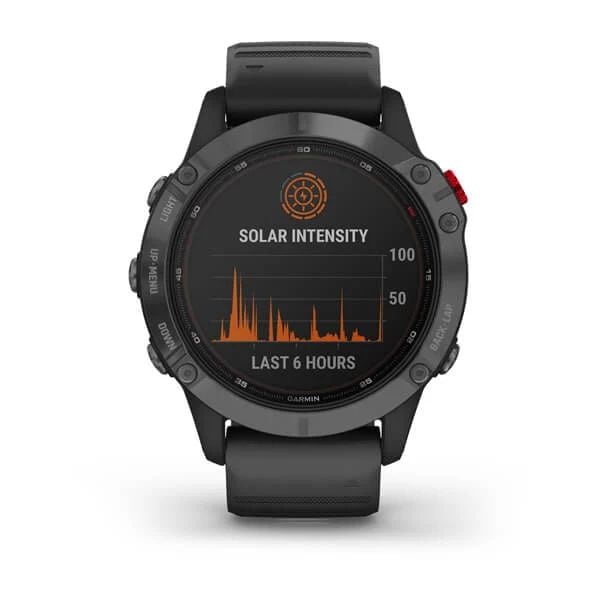
Indeed, in full sunlight, or even when visibility conditions are difficult, reflective LCD (which uses ambient light as a source of illumination) proves to be very effective. On this point, Garmin’s position is clear: give priority to efficiency over aesthetics. Indeed, for a demanding runner, it is inconceivable not to have a clear view of the information on the screen, to have to struggle with his watch or to have to adjust its brightness. When running, the watch must be an advantage and not a source of concern. It doesn’t matter if the colors are less shimmering than on a Samsung Galaxy Watch 3.
Another major criteria for users is if their high-end sports watch can keep up with them on long outings, or alternatively if it does not need to be recharged every other day. Here again, this type of LCD, which requires fewer light resources, better meets the mobility requirements of a Garmin.
Garmin’s solar technology
This is undoubtedly the great addition to this new edition of the Fénix 6, which is actually a filter that is applied to the dial and works like a solar window. In other words, between two layers of glass that make up the watch’s screen (including the protective Gorilla Glass layer), Garmin has added another layer of horizontal strips of acrylic glass to redirect the perceived light towards solar cells. This technology was developed by a French company, which has since been acquired and integrated into Garmin.
At first glance, when you look at the watch, this solar layer is invisible. And for good reason, the readability of the watch should not be reduced. On the other hand, if you linger a little on the Fénix 6 Solar, you can see a slight copper band around the dial. This more opaque zone is the most efficient in terms of energy recovery, since it alone collects 80-90 percent of the energy.
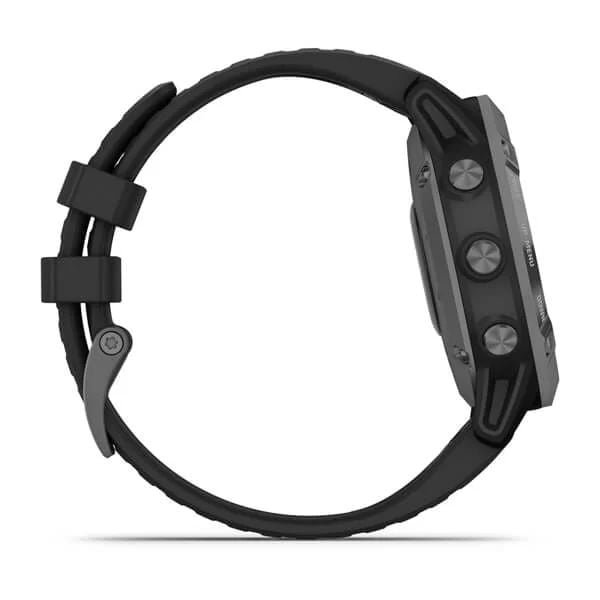
Concretely, this solar recharge is not an additional battery in the watch that would be consumed once the main battery is dead, nor is it an independent battery. Under no circumstances does the captured solar energy make it possible to dispense with conventional recharging.
In reality, Solar technology should be perceived as an extension of battery life, variable according to the light conditions. Indeed, Garmin considers that 3 hours of exposure to the sun at 50,000 Lux (i.e. a sunny day) increases battery life by 3 days. It is necessary to double this exposure time when the weather is overcast to obtain the same result.
In fact, we were able to use the watch in a wide variety of conditions. We want to see if the Solar version does indeed last longer. But how much longer? This is the most difficult thing to determine, of course, because the battery life varies according to the use of the watch. In our case, with two to three physical activities per week (about 1 hour), and a few activated notifications, we have reached 12 days of use without recharging, which is two more than on our classic Fénix 6. Above all, the sports watch is unrivalled when the power save mode is activated. In this configuration the autonomy would vary from 48 to 80 days depending on the use.
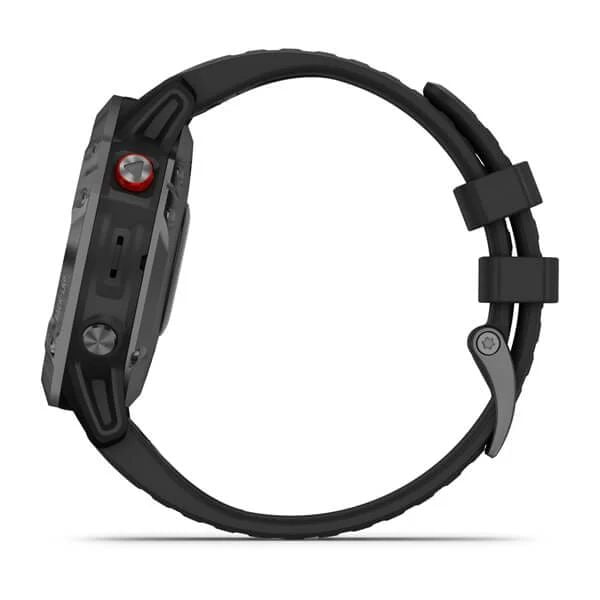
In other words, Garmin, which was already among the watch manufacturers capable of delivering the best autonomies, has managed to improve even further on this point. One regret, however, is the lack of a “Sapphire” version for the Solar version. Indeed, the brand’s most resistant screen does not fit the solar recharge filter very well, at least for the time being.
- Huawei Watch GT 2 Pro smartwatch introduced: here is the price
- The European Commission investigates Google about Fitbit
Power management
A menu in the watch allows to enter in detail into power management. Garmin wants everyone to be able to configure the watch as they wish and to be aware of the impact of each function on the battery life of the watch. Of course, it is possible to create personalized usage profiles by choosing which sensor should remain active. But the process is not easy and not really intuitive. As for the predefined menus, they give only few indications, like this “jacket mode” which only deactivates the cardio sensor.
It is unfortunate that there is no real-time indication of whether or not to activate an option. In any case, it is necessary to validate the profile and refer to the estimated battery life of your watch. Also it is a shame to not to have access to this power manager on the Garmin Connect application, so you have to set it up using the five buttons on the watch.
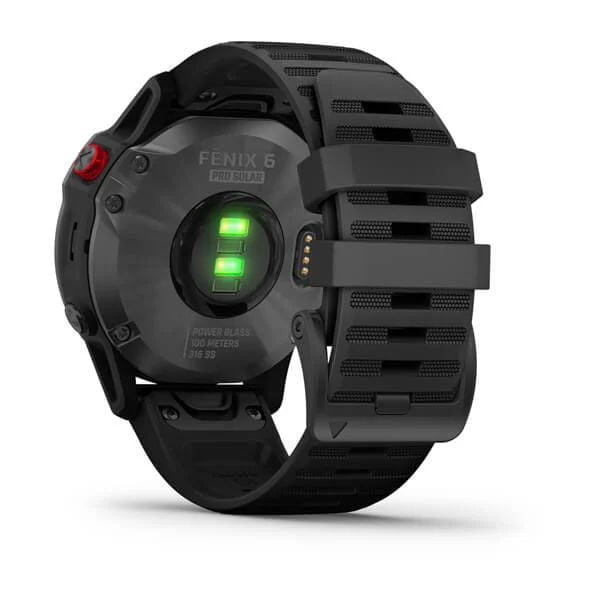
A multi-sport watch
Garmin’s flagship already has a solid reputation as a multi-sport watch. The Fénix 6 Solar, excels in classic activities such as hiking, running or cycling, with the help of a particularly precise GPS and quality sensors.
This 2020 version has the addition of activities that have also appeared on a few other watches in the range according to their speciality. That’s the advantage of the Fénix, which doesn’t get bogged down in this kind of subtlety and offers everything Garmin does, quite simply.
This year, therefore, the Fénix 6 is able, in addition to the rest, to provide follow-up for surfing, climbing and mountain biking.
Please note, however, that these new features are not reserved only for owners of Garmin’s latest craze. For owners of previous generation Fénix, the surfing or climbing analysis is to be found on V10.10 of the firmware.
Verdict: Garmin Fénix 6 Pro Solar Edition review
Garmin already had the most advanced connected sports watch on the market with the Fénix 6. The “Solar” version does as well as its predecessor, in every respect, and is even better in terms of range. Solar recharging is a real plus but will only change the lives of ultra-trailers or the most frantic sports people.
For the average person, this addition will simply mean going through the recharge box less often. Still, Garmin’s performance is remarkable and places the Fénix 6 Solar at the top of the hierarchy of connected sports watches.
Garmin Fénix 6 Pro Solar Edition specs
Technical
| System | Proprietary |
| Compatible systems | Android, iOS |
| App Store | Connect IQ |
| Available storage capacity | 32000MB |
| Battery type | Non-removable battery |
| Memory card support | No |
| Supported memory cards | No |
| Sealing | Yes |
| Keyboard | No |
| Wristband | Removable |
| Accessories | Charging cable |
Display
| Size (diagonal) | 1.3″ |
| Color | Yes |
| Touch-screen | No |
| Screen resolution | 283ppi |
| Screen definition | 260 x 260 |
Ports / Connections
| SIM card compatibility | No |
| Wi-Fi support | Yes |
| Bluetooth support | Yes |
| NFC support | Yes |
| GPS support | Yes |
| USB interface | USB cable |
Multimedia
| Camera function | No |
| Webcam | No |
Dimensions & Weight
| Width | 4.7cm |
| Height | 4.7cm |
| Thickness | 1.51cm |
| Weight | 72g |

